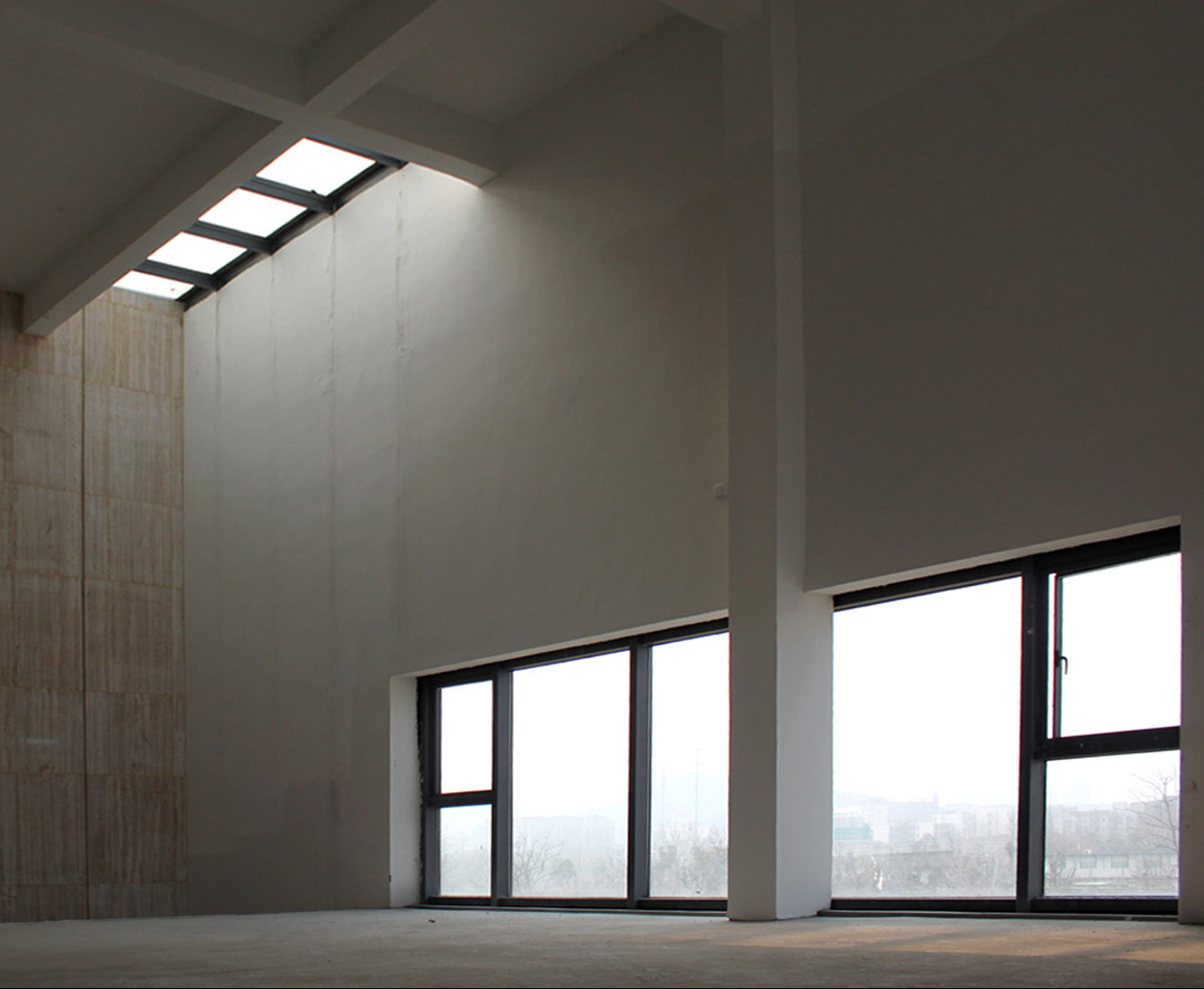西溪藝術村工作坊
Xixi Wetland Artist Studio
Xixi Wetland Artist Studio
杭州
Hangzhou
Hangzhou
2009


西溪濕地地塊分北中南三條細而狹長的建築基地,分別面臨前後二方向的山丘與沙丘水景。觀者沿著主要道路漫步,山、水、天、地、構成幾種線型的不同風景經驗。江南水鄉的線性織理與中國城市的街廓合院織理形式截然不同:聚落的水道不僅是連接系統,建築配置更是外向性以水為主導。
韓拙《山水純全集》的水有四時之色;郭熙《林泉高致》的山有三遠:高遠,深遠,平遠。設計不只在提供智者樂水的視覺經驗,更在營造仁者樂山可遊可居的空間意境,透過一系列不同的“觀景器建築”的位置、高低、空間形式與質地的安排組合,以及被觀的風景對象狀態的差異,啟發觀者對山水景觀的情境詮釋:視角和視點、環境與心境的不同。
西方繪畫與透視的起點在於觀者與實景之間關系三度空間的平面化。設計意圖希望透過觀者的凝視間有意識的改變,景觀的平面呈現被重新再框,觀者的主體性再次被實踐。有別於中國江南傳統園林設計中敘事空間的“框景”,“即步換景移”的時空關系, 這個設計以還原電影的方式,重新探討時間、空間與風景關系:移動時所見的景觀和風景,透過“再框”重組基地原有景觀,重組對基地風景的概念及經驗,形成一連串的“動景”。“框景”的概念被重新定義及豐富了。
韓拙《山水純全集》的水有四時之色;郭熙《林泉高致》的山有三遠:高遠,深遠,平遠。設計不只在提供智者樂水的視覺經驗,更在營造仁者樂山可遊可居的空間意境,透過一系列不同的“觀景器建築”的位置、高低、空間形式與質地的安排組合,以及被觀的風景對象狀態的差異,啟發觀者對山水景觀的情境詮釋:視角和視點、環境與心境的不同。
西方繪畫與透視的起點在於觀者與實景之間關系三度空間的平面化。設計意圖希望透過觀者的凝視間有意識的改變,景觀的平面呈現被重新再框,觀者的主體性再次被實踐。有別於中國江南傳統園林設計中敘事空間的“框景”,“即步換景移”的時空關系, 這個設計以還原電影的方式,重新探討時間、空間與風景關系:移動時所見的景觀和風景,透過“再框”重組基地原有景觀,重組對基地風景的概念及經驗,形成一連串的“動景”。“框景”的概念被重新定義及豐富了。
The site sits on
narrow strips of land opens to water views both in their front and back, while the design refers to its conceptual strategy as
spatio-architectural tactics “Re-framing Moving Views”, amplifying the
subjectivity and experiences of the viewer through architectural reframing.
Fusing allusions to classical Chinese aesthetic treatises on landscape and
editing techniques of film as an extension of the static analytical gaze of
perspective, the architecture reinterprets the wetland landscape through its
experiencing, attempting to provoke new spatial possibilities from visual
perception to emotional and intellectual understanding. The design conceived
the building as a series of architectural viewing apparatuses that attempt to
reproduce a variety of landscape viewing experience that visitors to the site
could encounter, in which mountain, water, sky and earth are gathered in
differing permutations. Different from
typical urban fabric of inward courtyard
in Chinese Cities, the linier fabric of villages in south China is outward
looking based on its functional connection with the waterway. Like the urban
fabric of water villages, the architecture unit of Xixi is established based on
the collection and interweaving of relationships from each individual working
space with water, sand dune and mount. Strolling along the architectural
promenade, each individual framing enhances the gazing of view with level
distant, loft distant, and deep distance, exploring the possibility of linier
landscape experience through mountain, water, sky and the earth.


